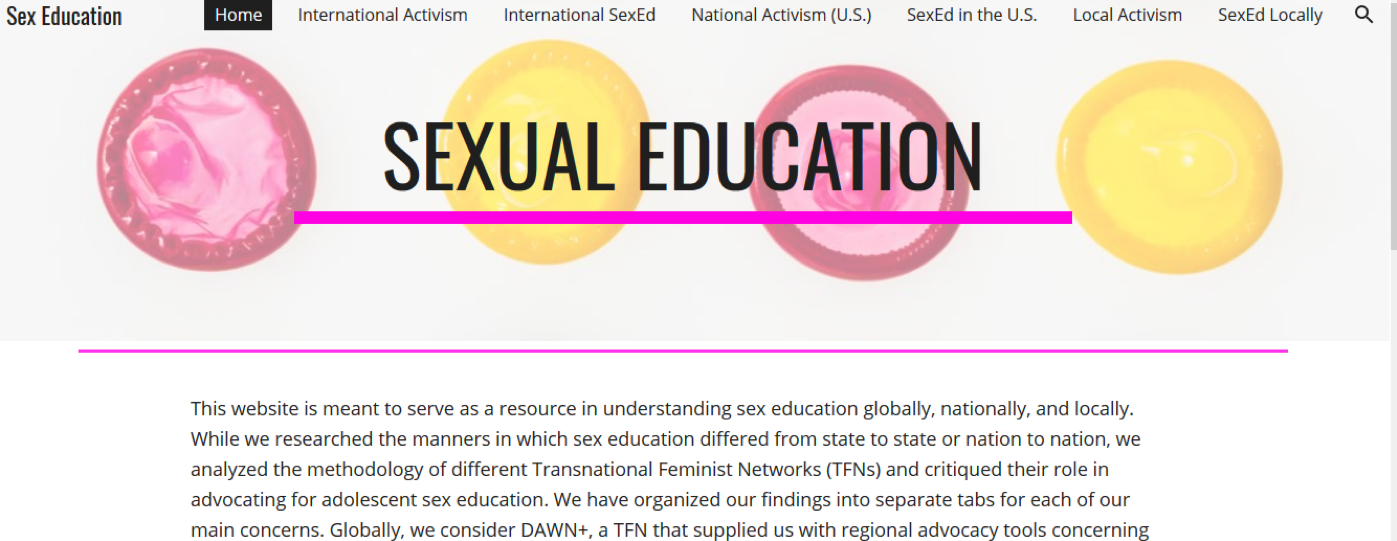Transnational Feminism Studies: An Online Module
 Chelsey Dyer working with
Chelsey Dyer working with
Stacy Clifford Simplican Senior Lecturer; Women and Gender Studies
Course context
This research was conducted with students enrolled in Women and Gender Studies 3201: Women and Gender in the Transnational Context. One of the key learning goals of this class is for students to understand what transnational feminism is from outside of a United States focused worldview. The class averages about 25 to 30 undergraduate students each semester and includes students with a range of majors from the social sciences to the engineering department. As such, there is a wide breadth of knowledge and skill that exists within the class, including diverse understandings and experiences with ideas of feminism. The goal of any feminist class is not to simplify differences into a single directive narrative, but rather, to clarify without simplifying.
Problem to be solved
Studies show that classes are increasingly using online learning tools to enhance student learning (Campus Computing Project 2009; Alexander and Sapra 2012; Hawkins 2015). However, there is still relatively little research examining how online learning environments intersect with feminist pedagogy, especially in classes focusing on transnationalism. Research demonstrates the ability of transnational methods to unsettle student’s socially learned understandings about the US and its ongoing legacy of imperialism. Yet, it also shows students’ struggle and resistance when encountering a new epistemology that de-centers their traditional worldview (Davis 2012).
Women and Gender in a Transnational Context, has such a wide breadth of focus that it can be difficult for students to grapple with ideas outside of a US framework. Ideas of transnationalism, women, and gender vary and are employed differently in various contexts. However, students struggle with understanding how these terms fluctuate when they are approaching the concepts solely from a US context. In order to better comprehend what the “transnational” is and how ideas of gender or employed in various transnational contexts, students must overcome the impetus to explore the transnational from a US context.
Approach
The class was designed in two sections. The first section addressed feminist pedagogy while the second section examined examples of transnational feminism. Using the knowledge they developed throughout the class, students were asked to complete a final project in which they researched a transnational feminist movement and developed a website compiling this information. Throughout the project students were supposed to reach out to a transnational feminist organization, interview them, and use this information to further their understanding of feminist transnationalism. Students then added the information they learned to their personally designed website, creating a publically available online reserve of material on transnational feminism.
Assessment
I will use pre and post-tests to examine student’s perceptions, fears, and goals while using an online platform. In addition, I will assess the student’s blog posts throughout the semester and the content they produced on their websites. I will look for patterns in obstacles students faced while compiling their final project as well as trends in how students are understanding transnational feminism.


